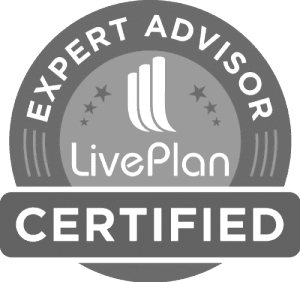Business entities with pass-through taxation, such as an S Corp, LLC, sole proprietorship, or partnership, do not retain losses within the business entity. They are passed through to owners on their personal tax returns. But business owners are not the only ones who can cash in on income or record losses. Individuals can do it too.
What is passive or active income?
Determining whether income is active or passive depends on if the individual materially participates in the venture that causes the gain or loss. Material participation is defined as being involved in the operations of an activity on a standard, continual, or significant basis.
The material participation test includes if the person:
- Participates for more than 500 hours in business activities or significantly participates in activities for more than 500 hours per year;
- Constitutes all of the business activity in the tax year;
- Participates 100 hours and the activity is as much as any other business owner’s activity;
- Participates in the business during 5 of the past 10 years (3 years if a personal service business), or;
- Participates on a regular, continuous, or substantial way during the past year.
In this example from Business Professor:
Tina is a passive investor in a partnership. In a given year, she earns $3,000 as her share of partnership profits. At the same time, Tina is a passive investor in an S corporation that loses $2,500 that year. She also owns an interest in and is actively involved in the operations of an LLC. The LLC loses $500 that given year that is allocated to Tina.
Tina can offset the $3,000 passive income with the $2,500 passive loss. That leaves $500 of passive income that is taxable. The $500 in losses from her LLC interest is active in nature. She cannot use these active losses to offset the passive income. The active losses can, however, be carried forward to offset future active income.
Passive Income Streams
There are eight types of passive income streams and there are plenty of ways to generate passive income, including
- Renting out a space, such as a bedroom or entire house,
- Investing in securities that pay dividends or interest, and
- Selling goods and services online as a side hustle.
8 Passive Income Streams
| Earned: | Income from working a job. |
| Profit: | Income from buying and selling. |
| Interest: | Income from lending money. |
| Royalty: | Income from others using your idea. |
| Dividend: | Income from stocks and bonds. |
| Rental: | Income from a rental property. |
| Capital Gains: | Assets increasing in value. |
| Residual: | Recurring income usually on a weekly or monthly basis after work is done. |
Active Income Streams
According to Investopedia, active income is income received from a job or business venture that you actively participate in, such as:
- Wages,
- Salaries,
- Bonuses,
- Commissions,
- Tips, and
- Net earnings from self-employment.
For the self-employed or anyone else with an ownership interest in a business, income from business activities is considered active if it meets the IRS’s definition of material participation, including the taxpayer who:
- Works 500 or more hours in the business during the year;
- Does the majority of the work in the business, and;
- Works more than 100 hours in the business during the year, and no other staff works more hours than the taxpayer.
In this example, Patrick and Emily, who are not married to each other, each have a 50% interest in an online business. Patrick does the majority of the day-to-day work in the business. Therefore, the IRS considers his income active. Emily, meanwhile, assists with the marketing activities but works fewer than 100 hours a year in the business. The IRS considers her income from the business to be passive.
Step-Up Basis and Investment Income
The step-up in basis provision applies to financial assets like stocks, bonds, and mutual funds, as well as real estate and other tangible property. An example would be the adjustment in the cost basis (or taxes owed) of an inherited asset to its fair market value on the date of the decedent’s death. It is determined by:
Cost Basis = Price Paid for an Asset + Additional Costs Over Time to Improve or Maintain the Original Asset
Step-up happens when the price of an inherited asset on the decedent’s death is above its original price.
For example: I have a client, Paula, whose husband passed away. Their assets and community property were stepped up in basis. Paula also receives income from an investment income from a family real estate property. Plus, Paula sold securities for a loss while the stock market was down hoping to offset the real estate income.
The Formula
Capital Gains: stepped up Assets + Community Property from husband
Dividend: stock securities for a “loss”
Rental: Investment Income from family real estate property
(Capital Gain – Dividend Losses)** + Rental Income = Taxable Income
($170,000 – $167,000) + 10,000 = Taxable income of $7,000
** May not be greater than $3,000 for individuals or married filing jointly, or $1,500 for married filing separately, in any tax year. If you exceed the $3,000 threshold for a given year, you can claim the loss in future years or use it to offset future gains, and the losses do not expire.
What can net operating loss offset against?
Net operating losses (NOLs) can be used to offset income by self-employed individuals, professionals, farmers, and other individuals with casualty losses exceeding their income. Pass-through entities cannot claim NOLs, but partners, members of limited liability companies, and shareholders of S corporations can claim NOLs proportionate to their ownership interest in the business entity.
Keep in mind that a NOL is first used to offset income in the year of the NOL. But if the NOL exceeds 80% of the income, then it can be used to offset income in future years. However, a NOL carryforward does not reduce income subject to self-employment tax; only income subject to the marginal tax is reduced.
According to the CARES Act, individual taxpayers’ losses that can be offset against nonbusiness income are limited to $500,000 for joint returns ($250,000 for single returns), under a provision that expires after 2025.
For example: A sole proprietor has a $42,000 NOL in 2021, which is applied to future tax years until the NOL is used up.
| 2022 NOL Year | ||
| Year | Carryforward | Unused Loss |
| 2022 | $42,000 | $40,000 |
| 2023 | $40,000 | $37,000 |
| 2024 | $37,000 | $31,500 |
| 2025 | $31,500 | $22,500 |
| 2026 | $22,500 | $12,700 |
| 2027 | $12,700 | $4,000 |
| 2028 | $4,000 | No remaining NOL |
Offsetting the Gain or Loss
To determine a gain or loss, the first thing you need to do is keep track of your income streams and much profit or loss is from each one. We suggest using a spreadsheet or accounting software to track this.
Second, monitor your expenses to know how much money you are spending or losing, and on what—it makes a difference. A budgeting app or spreadsheet can be handy for this.
Optionally, if you own a business, reinvesting in it could reduce the tax bite, personally, come tax time. So, track these actions too.
Don’t Do This At Home
Calculating gains and losses on your taxes is complicated. We do not recommend trying to do this on your own because each gain or loss could be taxed at a different rate depending on its type. Give us a call to help determine how much you will pay or receive come tax time.







